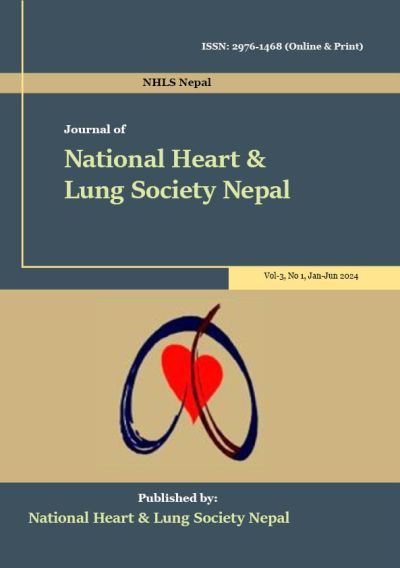Coronary Artery Protection with Chimney Stent in High-Risk Case of Coronary Occlusion in Transcatheter Aortic Valve Implantation
DOI:
https://doi.org/10.3126/jnhls.v3i1.66388Keywords:
coronary occlusion, chimney/snorkel stent technique, transcatheter aortic valve implantationAbstract
Transcatheter aortic valve implantation (TAVI) has rapidly evolved in the last decade to become the treatment of choice for most patients with severe aortic stenosis. Acute coronary occlusion during TAVI is a rare and life-threatening complication with high morbidity and mortality rates. If coronary occlusion is considered highly likely to occur, a risk reassessment could favor surgical aortic valve replacement. An excessive surgical risk that mandates continuing with the transcatheter strategy requires coronary protection techniques. Coronary protection techniques include; Coronary wire protection, Chimney/snorkel stent technique, “Bioprosthetic Aortic Scallop Intentional Laceration to prevent Iatrogenic Coronary Artery obstruction,” (BASILICA) technique, Splitting devices, and UNICORN procedure. In this case report we present our first experience of the “Chimney/Snorkel stent technique” for coronary protection in a case where coronary occlusion risk was high due to low coronary height, small sinus of Valsalva, and use of balloon-expandable valve.




